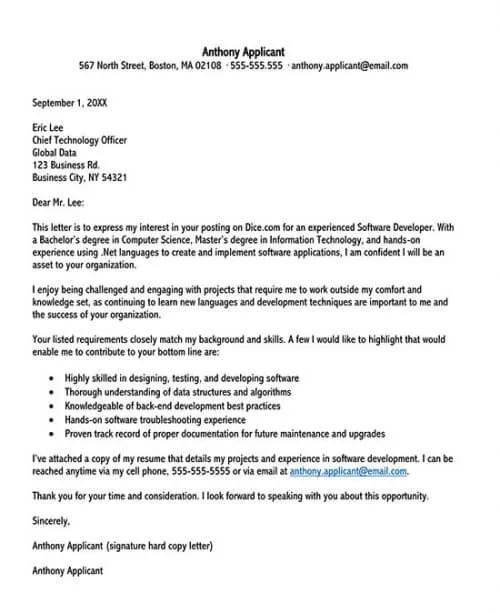Crafting the Perfect Software Dev Cover Letter
A software developer cover letter is your first impression. It’s a crucial document that can make or break your chances of landing an interview. Unlike a resume, which lists your skills and experience, a cover letter allows you to tell your story, highlight your passion, and demonstrate why you’re the perfect fit for the role. In this article, we’ll explore five key tips to help you write a cover letter that grabs the attention of hiring managers and sets you apart from the competition. A well-crafted cover letter is your opportunity to showcase your personality, enthusiasm, and genuine interest in the position. It’s about more than just listing your qualifications; it’s about making a connection and showing why you’re the right person for the job.
Highlighting Your Skills (Tip 1)
Your cover letter should not be a simple rehash of your resume. Instead, use it to highlight the skills and experiences most relevant to the specific job you’re applying for. Carefully review the job description and identify the key skills and qualifications the employer is seeking. Then, provide specific examples of how you’ve demonstrated those skills in previous roles or projects. This is your chance to go beyond the surface and provide concrete evidence of your abilities. Use action verbs to describe your accomplishments and quantify your achievements whenever possible. For instance, instead of saying you “worked on a project”, describe how you “developed a new feature that increased user engagement by 15%.” This level of detail demonstrates your understanding and contribution.
Showcasing Technical Expertise
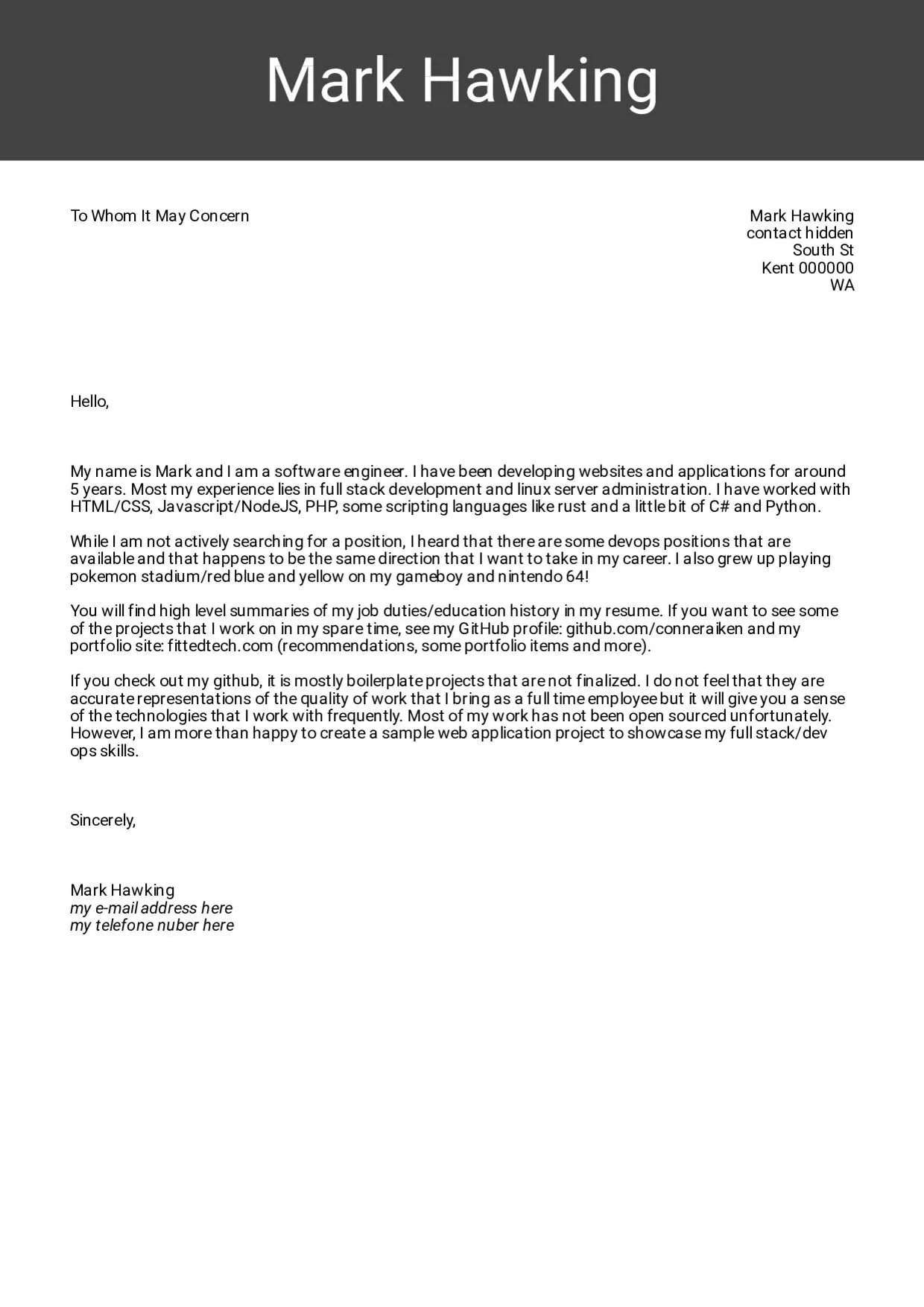
Software development requires a deep understanding of various programming languages, frameworks, and tools. In your cover letter, clearly mention the technologies you’re proficient in. Tailor this section to align with the job requirements. If the job emphasizes Java, highlight your Java experience. If it’s focused on front-end development, emphasize your skills in HTML, CSS, and JavaScript. Be specific, mentioning not only the languages you know but also your familiarity with related libraries, APIs, and development environments. This helps the recruiter quickly assess your technical fit for the role.
Quantifying Achievements
Whenever possible, quantify your accomplishments to demonstrate the impact you’ve made in previous roles. Instead of just stating you “improved system performance,” specify by how much. Did you reduce load times by a percentage? Did you increase efficiency? Did you contribute to cost savings? Use numbers to illustrate your achievements. For example, “Optimized database queries, resulting in a 20% improvement in application response time.” These quantifiable results provide concrete evidence of your contributions and set you apart from candidates who only provide general statements.
Tailoring to the Job Description (Tip 2)
One of the biggest mistakes you can make is sending a generic cover letter to every job you apply for. Tailoring your cover letter to each specific job is essential. This shows the employer that you’ve taken the time to understand their needs and that you’re genuinely interested in the position. Carefully review the job description and use the same keywords and phrases the employer uses to describe the role. Highlight the skills and experiences that align with the job requirements and explain why you’re a good fit. A customized cover letter demonstrates that you’re not just looking for any job; you’re specifically interested in this one. Always make sure your cover letter is specific and relevant to the role.
Researching the Company
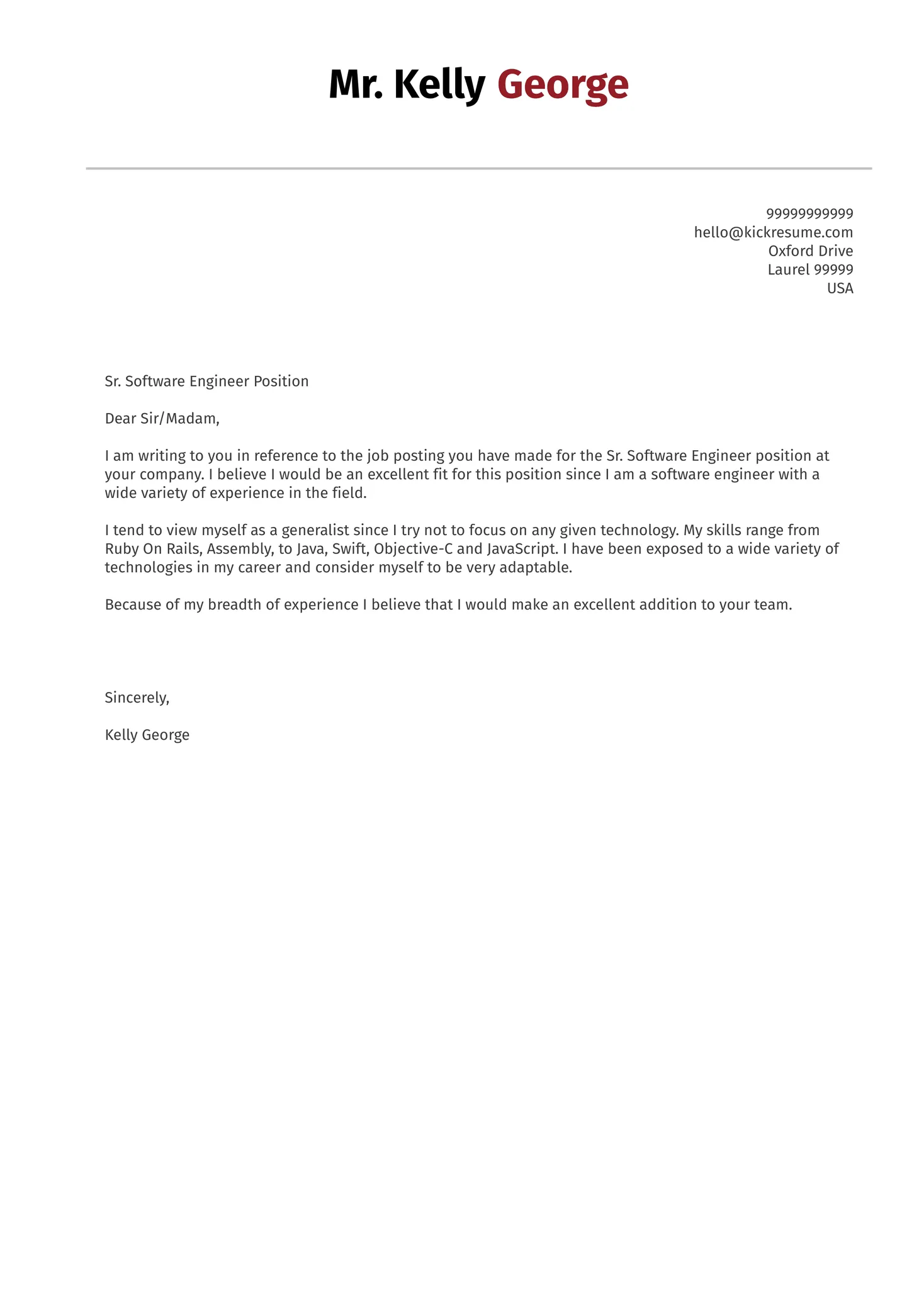
Before you start writing, take the time to research the company. Understand their mission, values, and the products or services they offer. This information will help you tailor your cover letter to demonstrate your understanding of the company and your interest in their work. Mention specific projects or initiatives that resonate with you and explain why you’re excited about the opportunity to contribute. This demonstrates your initiative and genuine interest in the role, making you a more attractive candidate. Knowing the company’s culture helps you align your letter with their values.
Matching Skills to Requirements
Once you’ve researched the company, match your skills and experiences to the specific requirements listed in the job description. For each requirement, provide a brief example of how you’ve demonstrated that skill in the past. This shows the hiring manager that you not only have the necessary skills but also have experience applying them in a professional setting. Use the same keywords and phrases from the job description to demonstrate your familiarity with their terminology and expectations. This approach demonstrates that you are a strong fit and understand the specific demands of the role.
Formatting for Readability (Tip 3)
A well-formatted cover letter is easy to read and makes a positive impression. Use a professional font, such as Arial or Times New Roman, and keep the font size between 10 and 12 points. Use clear headings and subheadings to break up the text and make it easy to scan. Use bullet points to list your skills and accomplishments, and leave plenty of white space between paragraphs. Proper formatting shows that you pay attention to detail and respect the reader’s time. Aim for a clean and uncluttered design that emphasizes your key qualifications and experiences. Make sure there are no formatting inconsistencies.
Using a Professional Tone
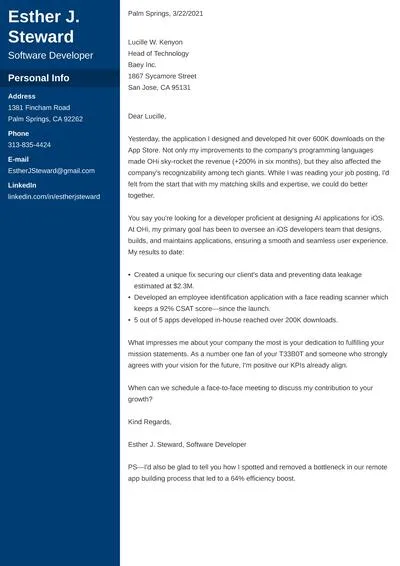
The tone of your cover letter should be professional and respectful. Avoid slang, jargon, and overly casual language. Use a formal salutation, such as “Dear Mr./Ms. [Last Name],” and a professional closing, such as “Sincerely” or “Regards.” Proofread your cover letter carefully to ensure there are no grammatical errors or typos. Your language should be clear, concise, and direct. Make every sentence count and avoid unnecessary fluff. Focus on what you can offer the employer and how your skills and experiences align with their needs. Make it concise.
Keeping it Concise
Keep your cover letter concise and to the point. Aim for a length of no more than one page. Hiring managers are busy people, so they don’t have time to read lengthy cover letters. Focus on the most important information and avoid unnecessary details. Be selective about what you include and prioritize the skills and experiences most relevant to the job. This approach demonstrates respect for the reader’s time and showcases your ability to communicate effectively. Avoid irrelevant information and be direct and clear about your qualifications.
Demonstrating Passion (Tip 4)
Show your enthusiasm for the role and the company. Explain why you’re excited about the opportunity and what you hope to achieve. This demonstrates your genuine interest in the position and makes you a more memorable candidate. Mention specific projects or initiatives that resonate with you and explain why you’re excited about the opportunity to contribute. Showing your passion makes you more than just another applicant; it makes you a person with drive and initiative. It shows you are excited and ready.
Expressing Enthusiasm
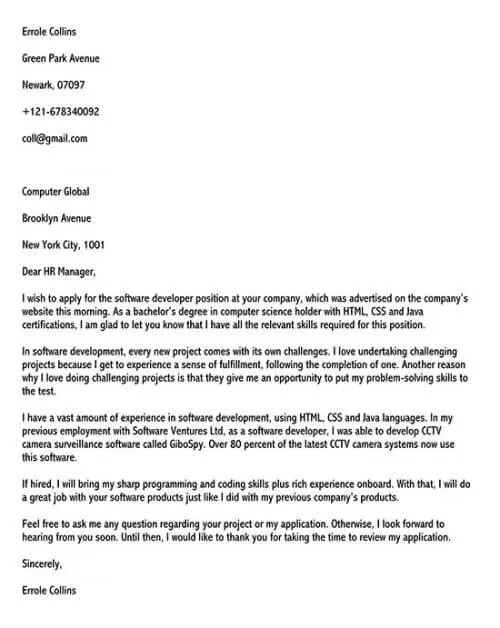
Express your enthusiasm for the role and the company in a genuine and authentic way. Avoid generic statements and instead, explain what specifically excites you about the opportunity. Mention the company’s mission, values, or recent achievements that resonate with you. Describe how you see yourself contributing to their success. This level of engagement demonstrates that you’ve done your research and are genuinely interested in joining their team. Make sure your enthusiasm feels authentic.
Mentioning Personal Projects
If you have personal projects or open-source contributions, mention them in your cover letter. This shows your passion for software development and demonstrates your initiative and technical skills outside of your professional experience. Briefly describe your projects, the technologies you used, and the outcomes you achieved. Including personal projects can differentiate you from other candidates and showcase your commitment to learning and innovation. Including personal projects also adds a personal touch.
Proofreading and Editing (Tip 5)
Before submitting your cover letter, proofread it carefully for any errors in grammar, spelling, or punctuation. Even a minor mistake can detract from your professionalism and make a negative impression. Read your cover letter aloud to catch any awkward phrasing or grammatical errors. Consider having a friend, family member, or career counselor review your cover letter to provide feedback and catch any errors you may have missed. This will ensure your letter is polished and error-free. This is the final step.
Checking for Errors
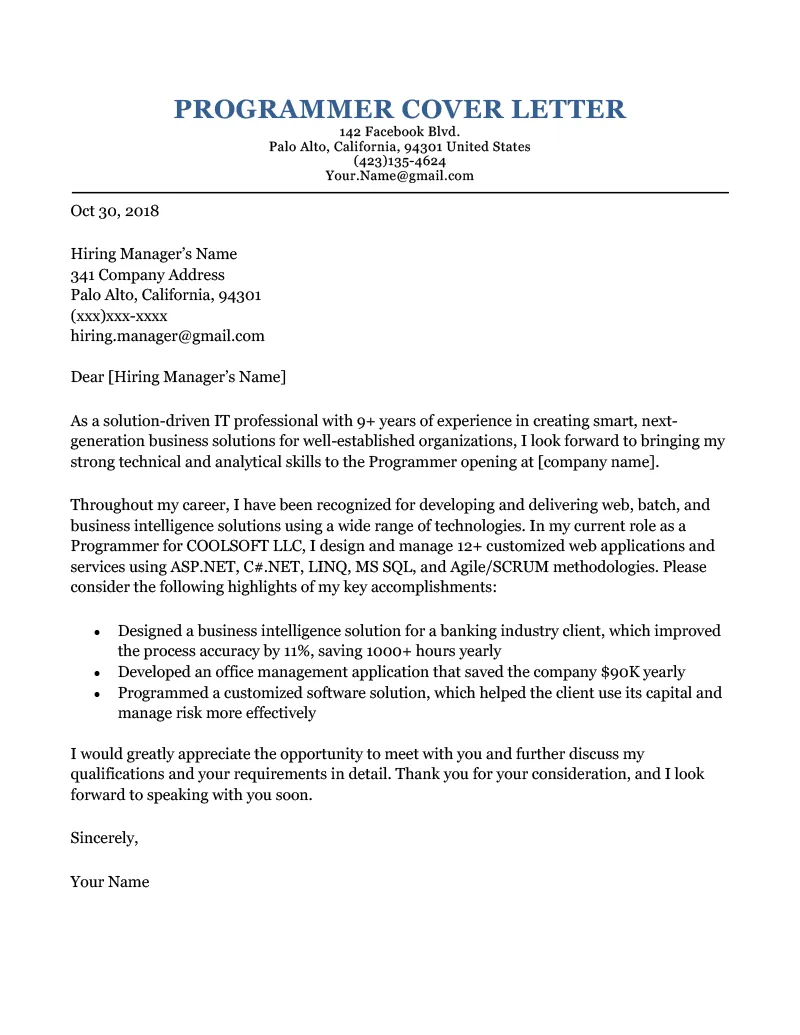
Carefully check your cover letter for any errors in grammar, spelling, and punctuation. Use a spell checker, but don’t rely on it entirely. Proofread the document multiple times, and read it aloud to catch any mistakes you might have missed. Typos and grammatical errors can make you look careless or unprofessional, so it’s essential to eliminate them before submitting your application. Take the time to meticulously review the document.
Getting Feedback
Ask a trusted friend, family member, or career counselor to review your cover letter. Get feedback on your writing style, the clarity of your message, and the overall impact of your cover letter. A fresh pair of eyes can often catch errors or suggest improvements you might have missed. Consider asking someone in the software development field to review your letter and provide feedback on your technical skills and experience. Constructive criticism will help you refine your cover letter and improve your chances of landing an interview.
